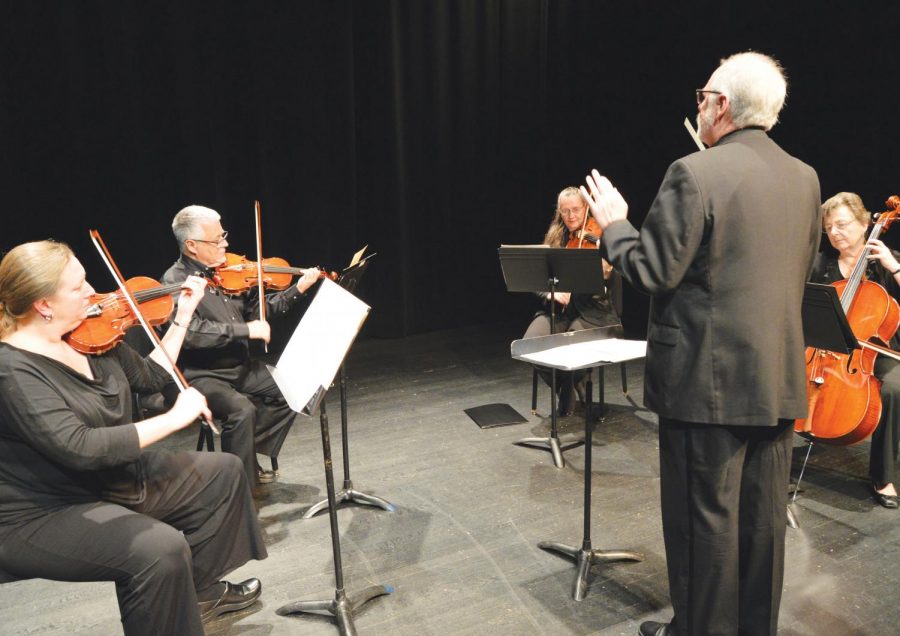Faculty, students play in String Ensemble
Photo by: Rian Sanders
The Oct. 19 String Ensemble contains pieces from composers such as Alexander Scriabin.
Dr. Terry Roberts directed FMU’s String Ensemble, which performed an eclectic selection of pieces in the Black Box Theatre at the FMU Performing Arts Center on Oct. 19.
Between pieces, Roberts explained the background behind the music and the composers.
One of the pieces performed was “Don Quixote” by Swedish composer Georg Philipp Telemann. The Telemann piece was broken into five parts and followed the story of the fictional Don Quixote, including his attack on a windmill. One of Telemann’s students wrote the libretto, or text for the opera, and Telemann composed the music, according to Roberts.
“At this time, Telemann was already 80 years old,” Roberts said. “He lived to be 86, and he decided to take it on because he thought it would be really fun to write this opera.”
Then, the ensemble performed “Vocalise” by Russian composer Sergei Rachmaninov. Originally, “Vocalise” was written for soprano and piano, but the soprano section was not given any particular words or syllables, Roberts said. This allows the piece to be easily transcribed for different instruments.
The ensemble then performed another Russian piece from the same period, Alexander Scriabin’s “Andante.” Scriabin was a contemporary of Rachmaninov and a famous pianist.
Roberts said Scriabin was heavily influenced by Eastern philosophy. Scriabin made atonal music and created a system of matching notes with certain colors, Roberts said.
Because of the symbolism in his more mystical work, Scriabin was regarded as the greatest Russian composer during the Russian Revolution, according the Roberts.
“Fortunately, ‘Andante’ is a very tonal, very lovely piece,” Roberts said.
The ensemble closed its performance with Johann Stamitz’s “Symphony in G Major.” Roberts said the piece exemplified Stamitz’s work with dynamics, or the way a piece changes in volume. Roberts also said Stamitz was an inspiration to other composers as well.
“He’s sort of considered as the model for Mozart,” Roberts said.
The String Ensemble performs once a semester, and its performances are open for FMU students and professors to attend. Roberts said directing the ensemble is similar to a college athletic team, and the music he selects reflects the skill level of the ensemble.
“I’m always looking for something a little different and challenging for the people who are playing,” Roberts said. “They’re pretty good right now. So, I pushed them a bit with some more difficult things.”
The String Ensemble also included professors Dr. Lorianne Turner, biology; Dr. Julia Krebs, biology; and Dr. Mary Louise Nagata, history. It also included Dr. Yuri Lvovsky, a retired physicist who performed with the group while taking art history classes at FMU. Lvovsky said he began attending FMU so he could perform with the ensemble.
According to many members of the ensemble, music runs in their families. All of the members said they have been playing their instruments since childhood. Turner said she began playing the violin when she was 3 years old. Nagata said she had a career in music before becoming a professor of history.
